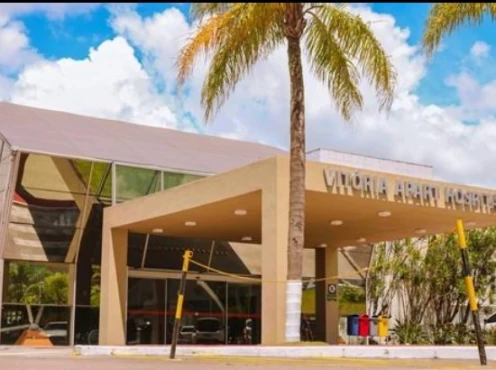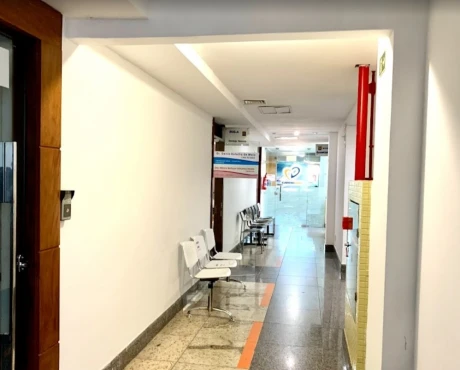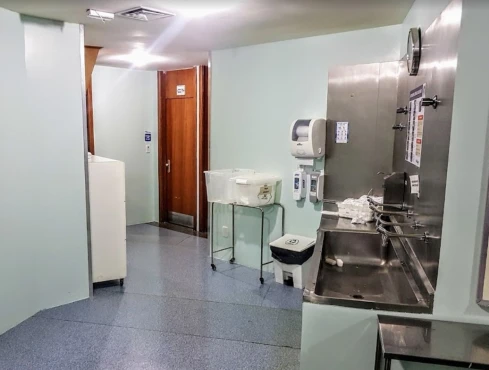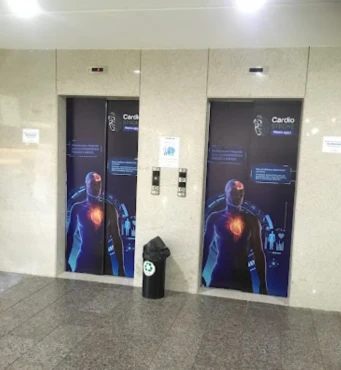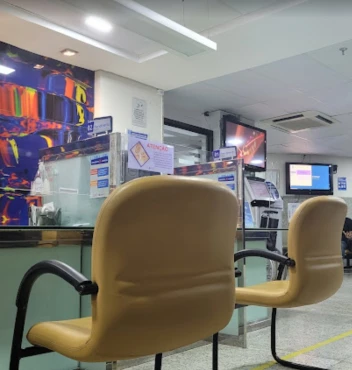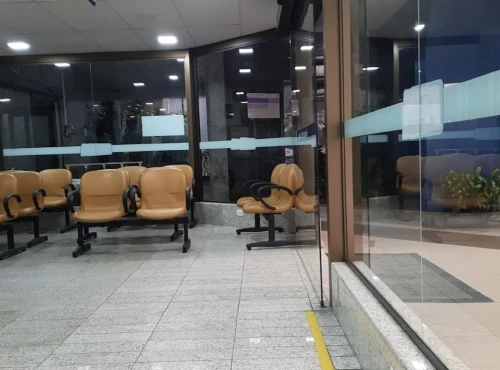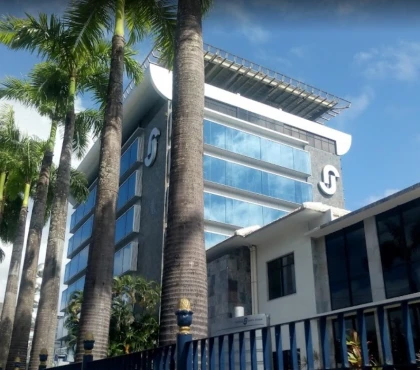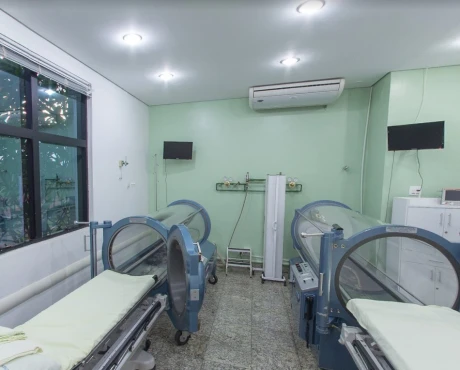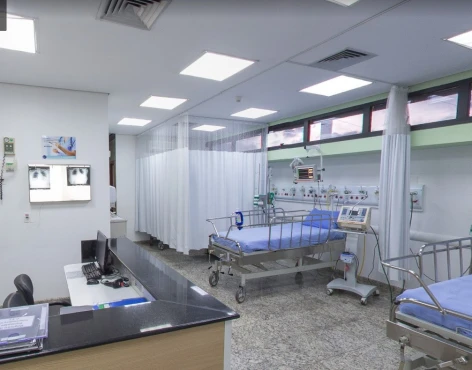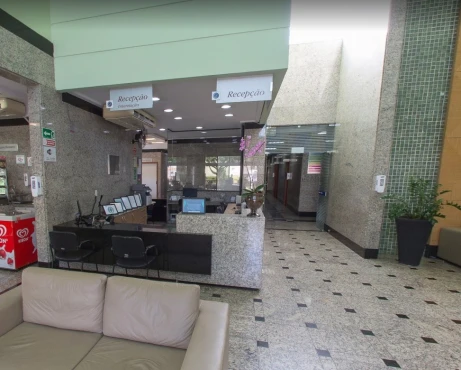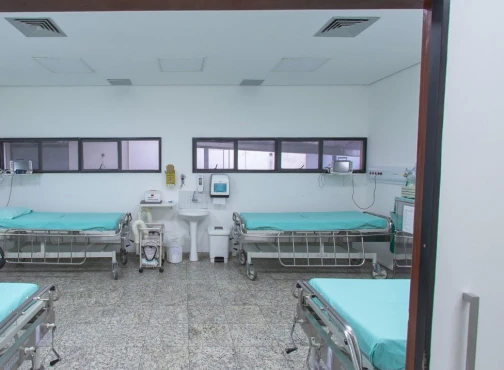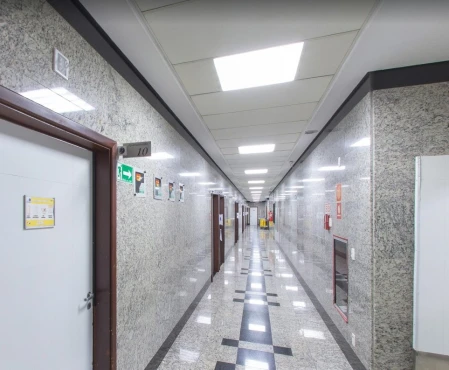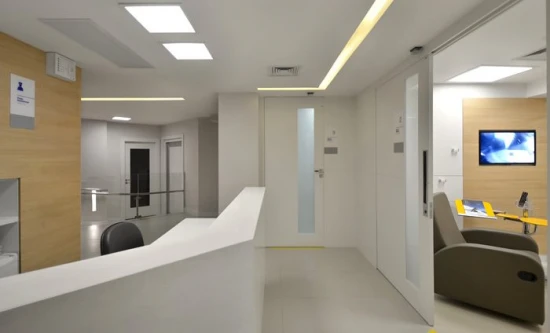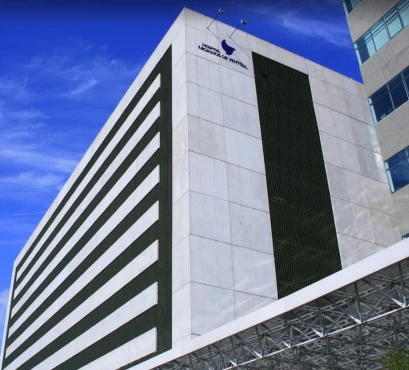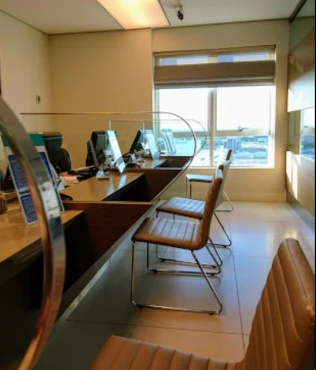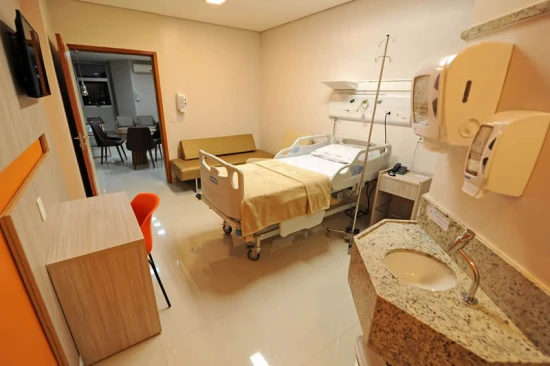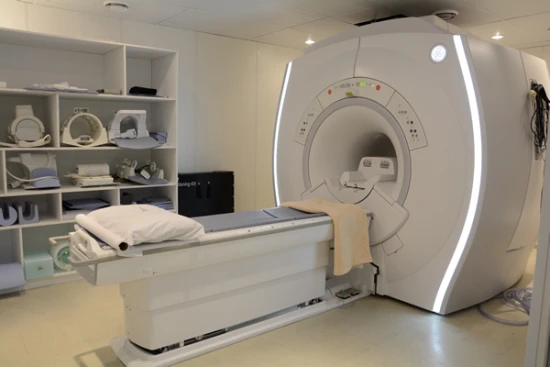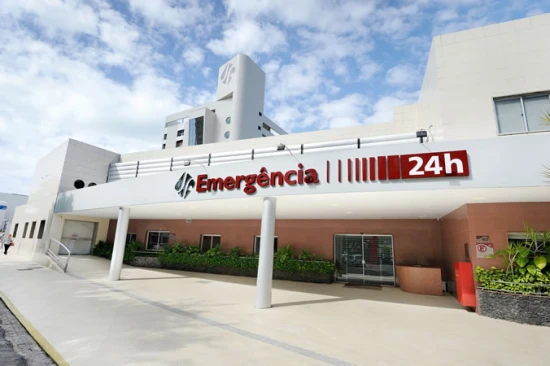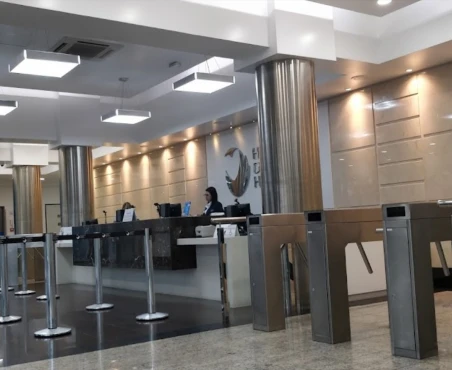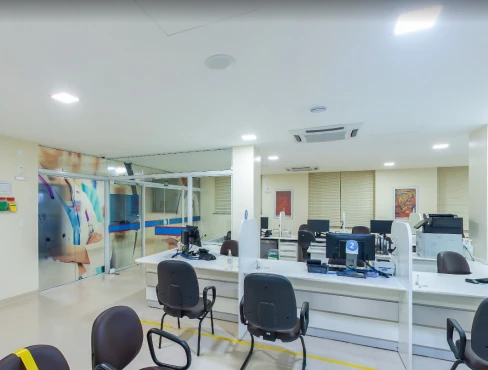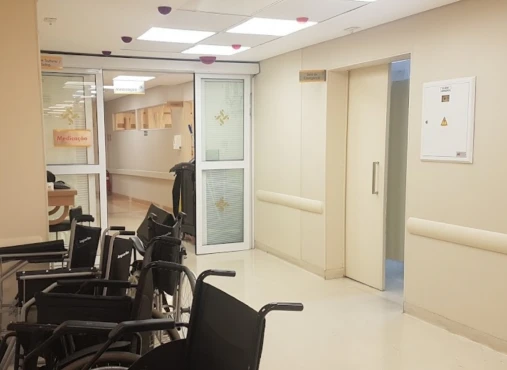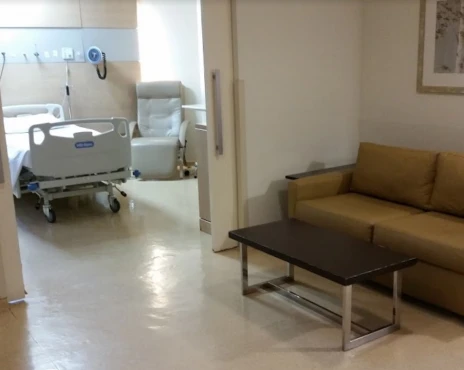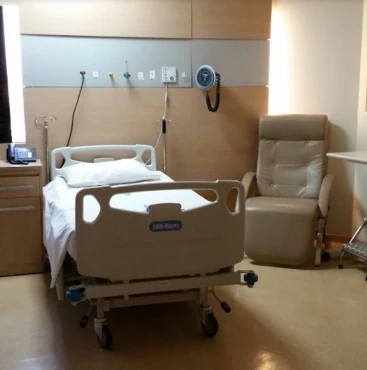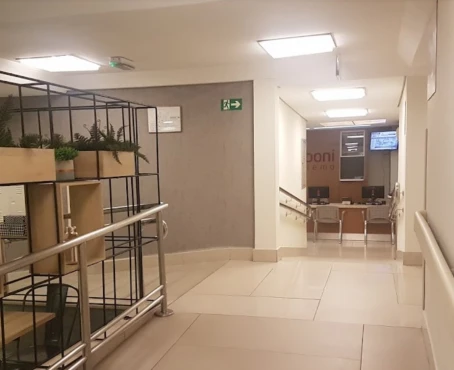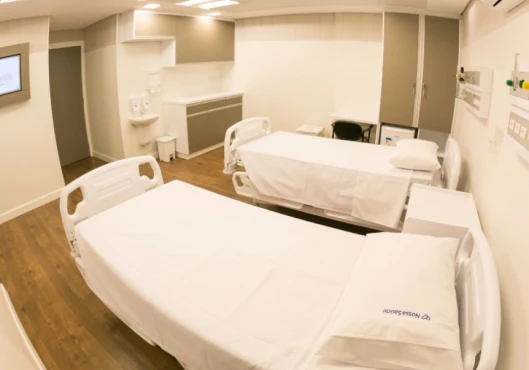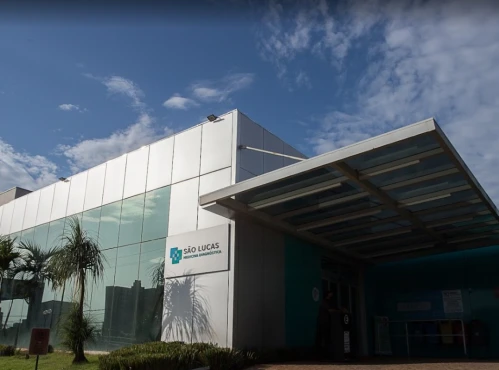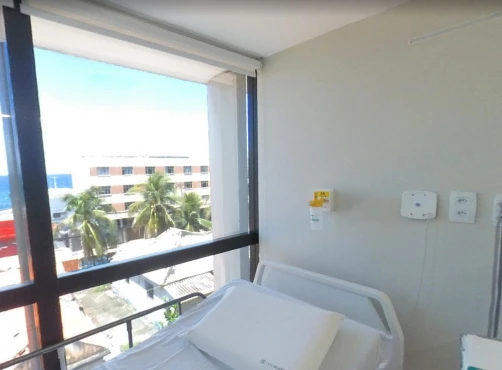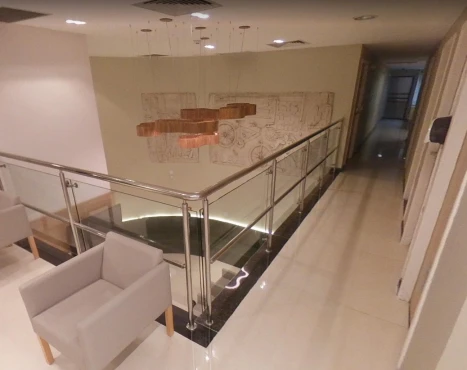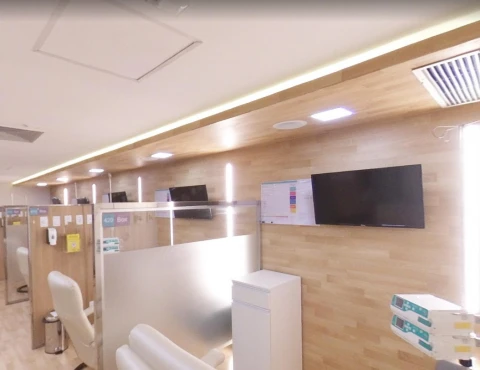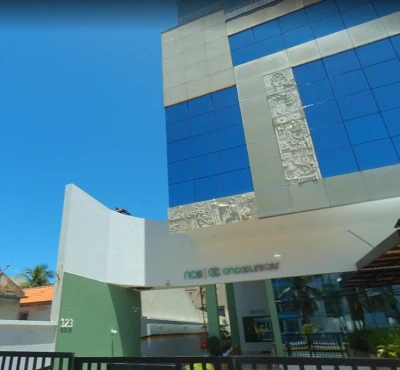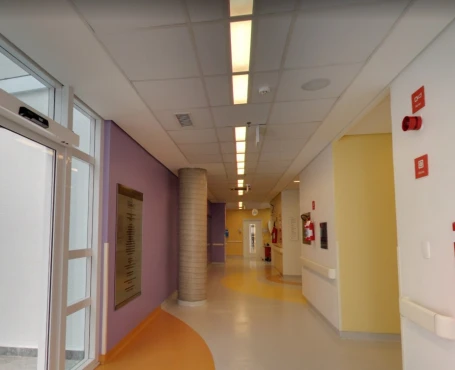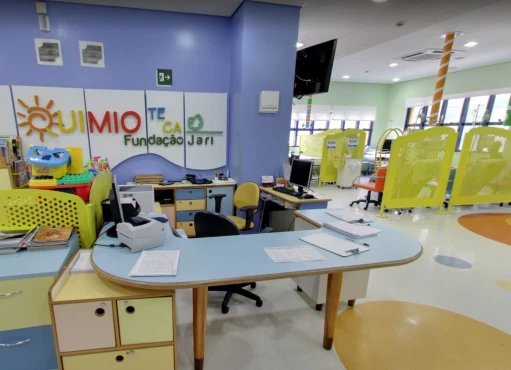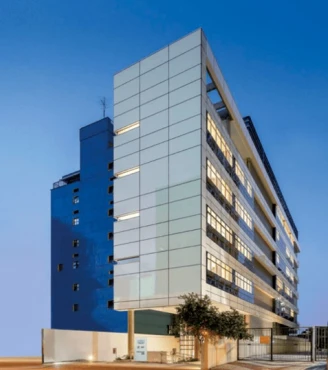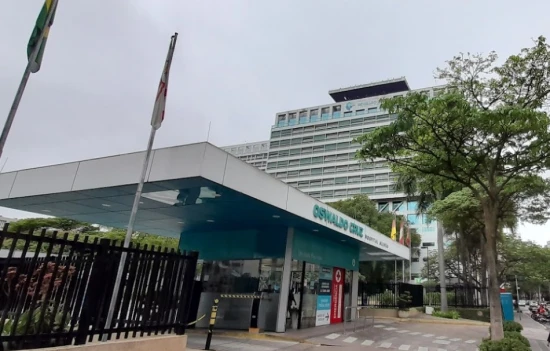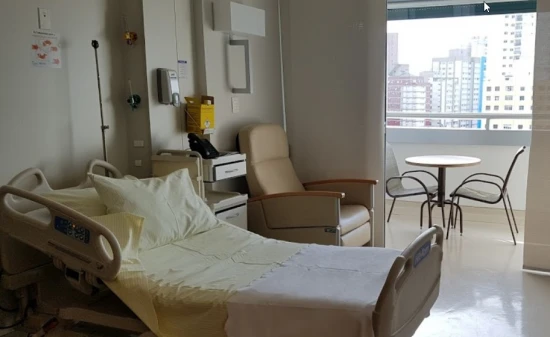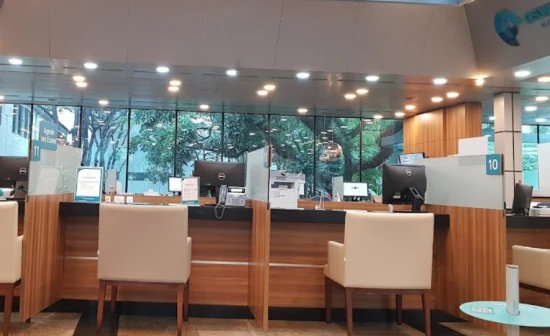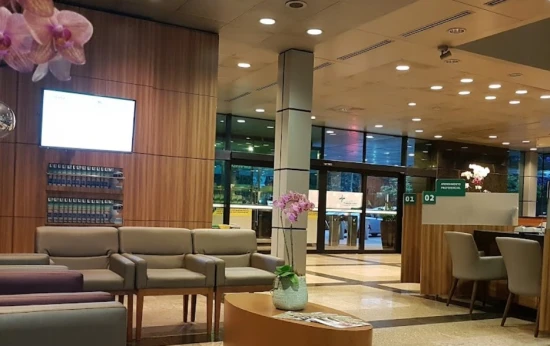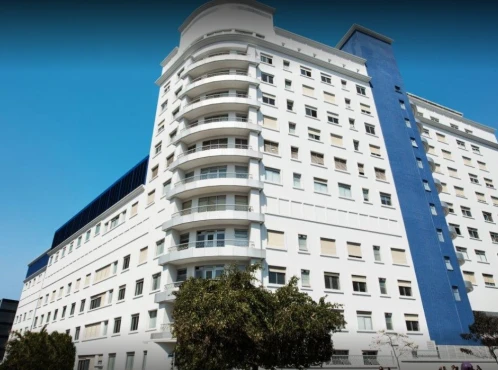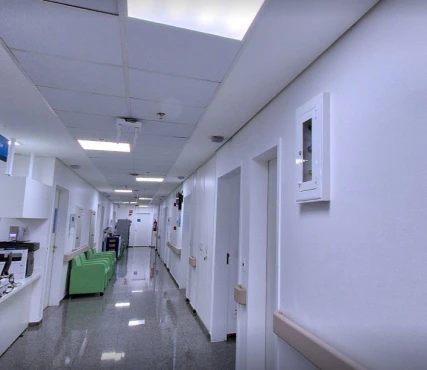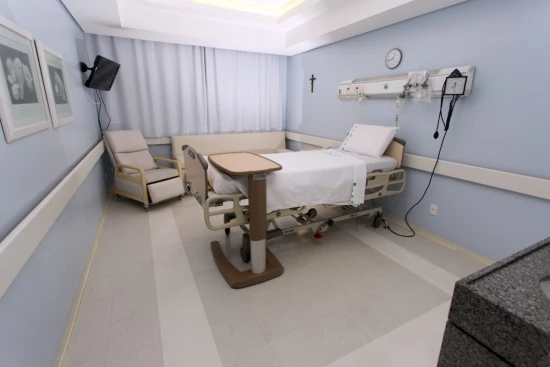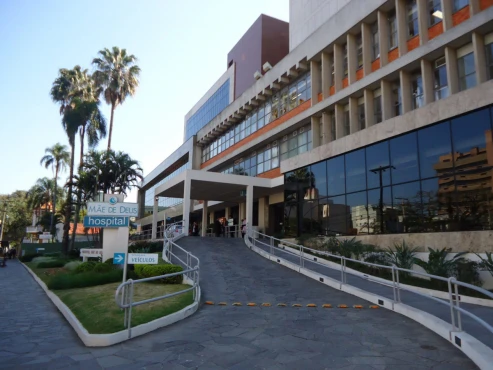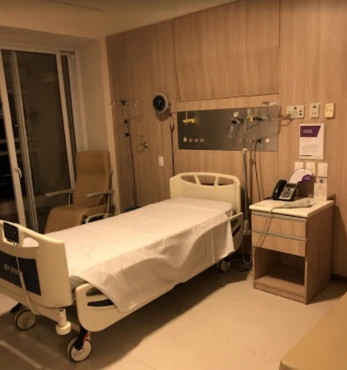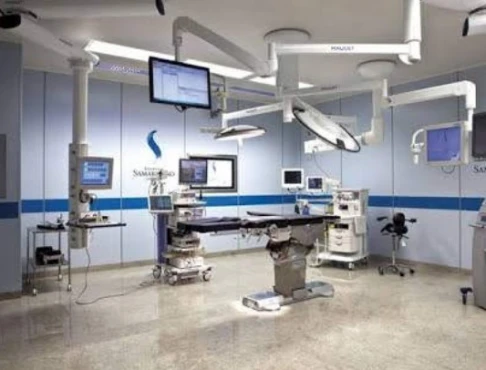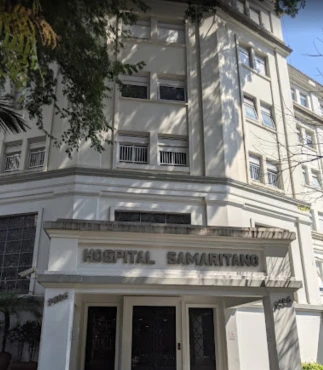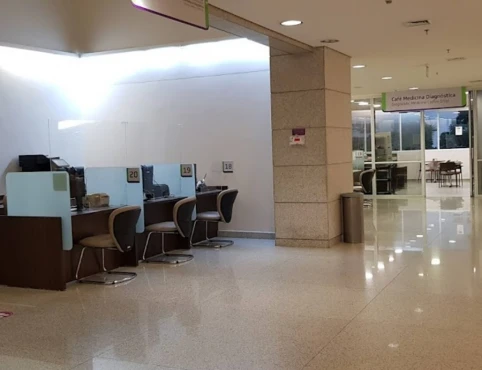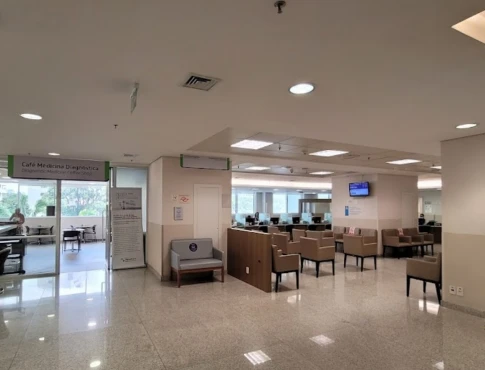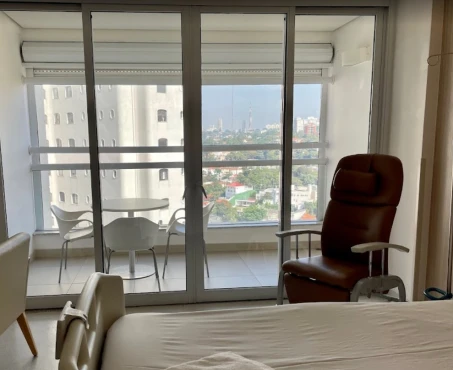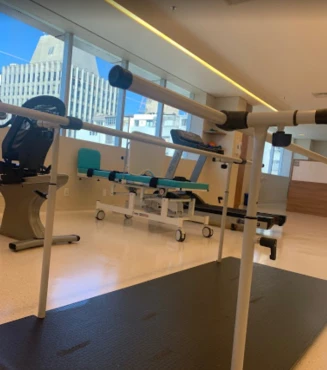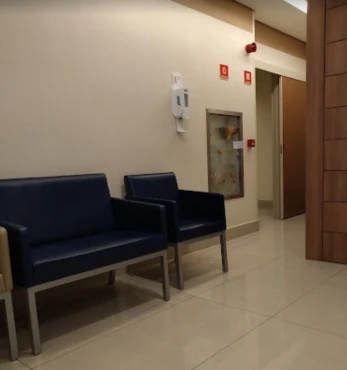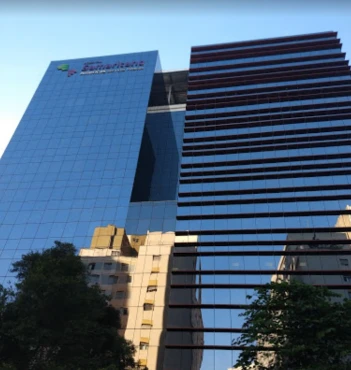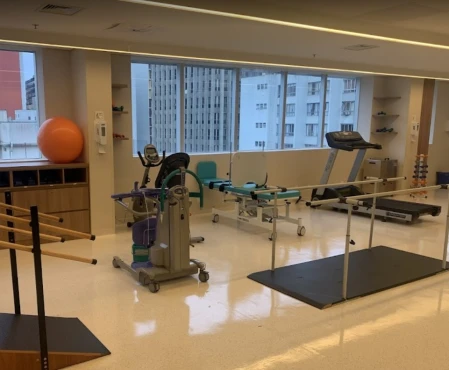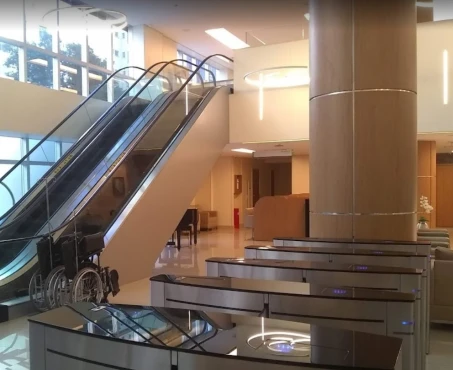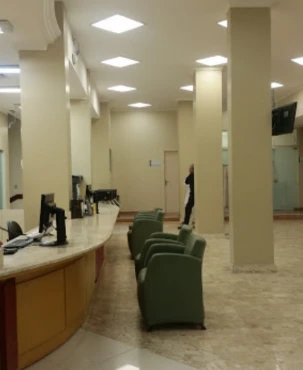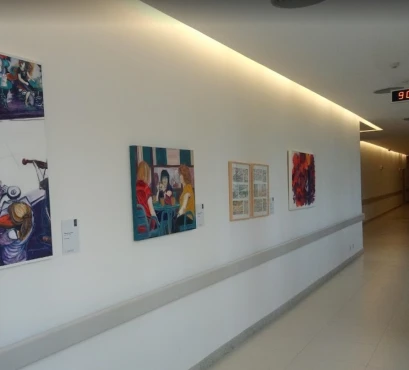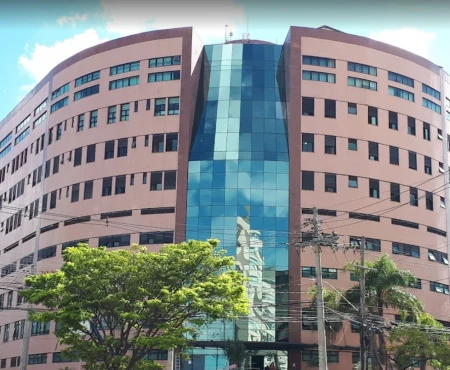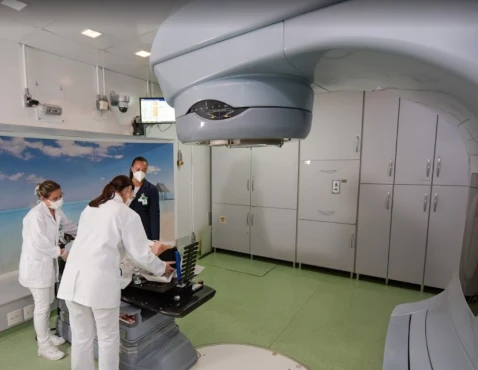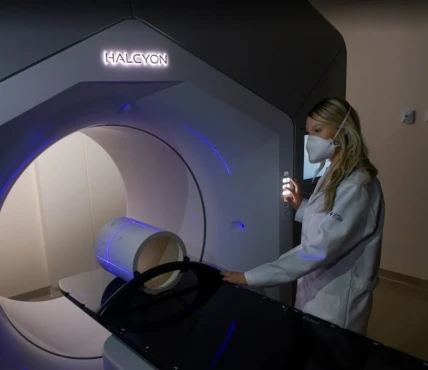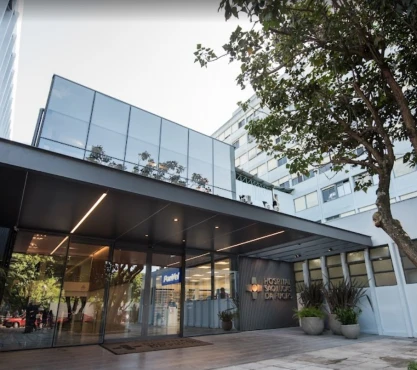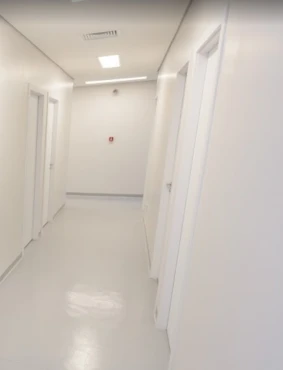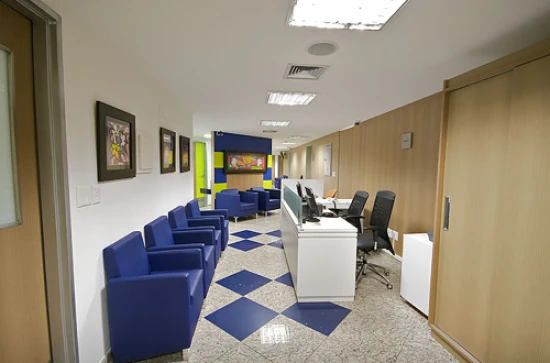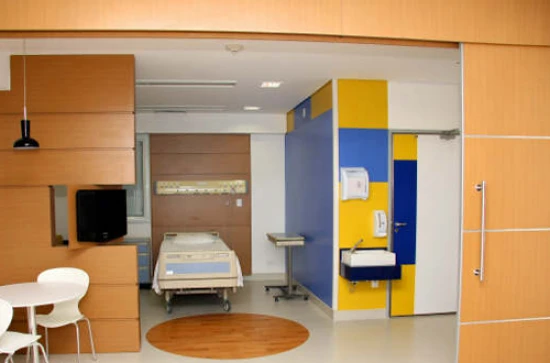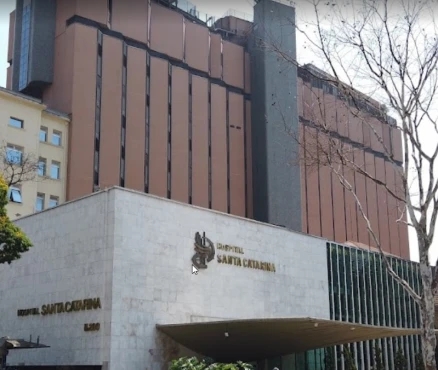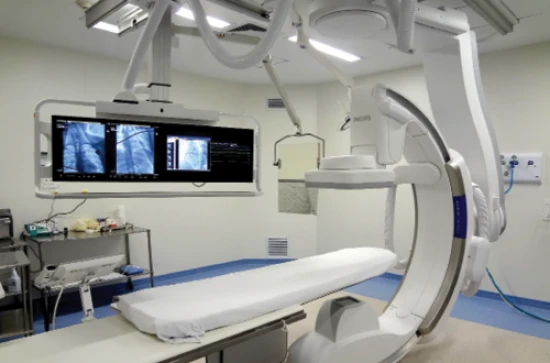Chronic pain treatment in 21 Neurosurgery and Oncology clinics in Brazil
21 clinics specializing in Neurosurgery and Oncology providing treatment of
Chronic pain
Chronic pain is persistent pain lasting beyond the normal healing time. It can result from various conditions or injuries and requires a multimodal approach to manage, including medications, physical therapy, and psychological interventions to improve quality of life.
Read more...
disease in Brazil.
-
Intrathecal pain pump
≈ $1,496
-
Brain aneurysm repair
≈ $5,406
-
Brain aneurysm clipping
≈ $5,595
-
Microvascular decompression (MVD)
≈ $3,676
-
Arteriovenous malformation (AVM) resection
≈ $5,208
-
Surgical neurolysis
≈ $957
-
Epidural block
≈ $276
-
Hemicolectomy
≈ $3,255
-
Rectum anterior resection
≈ $3,121
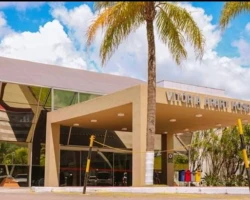
-
Intrathecal pain pump
≈ $1,496
-
Surgical neurolysis
≈ $957
-
Epidural block
≈ $276
-
Hemicolectomy
≈ $3,255
-
Rectum anterior resection
≈ $3,121
-
Radical prostatectomy
≈ $653
-
Transurethral resection of the prostate (TURP)
≈ $2,110
-
Conization
≈ $675
-
Open hysterectomy
≈ $1,981
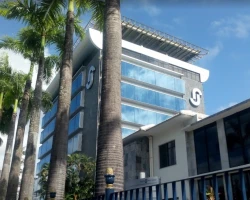
-
Intrathecal pain pump
≈ $1,496
-
Surgical neurolysis
≈ $957
-
Epidural block
≈ $276
-
Hemicolectomy
≈ $3,255
-
Rectum anterior resection
≈ $3,121
-
Radical prostatectomy
≈ $653
-
Transurethral resection of the prostate (TURP)
≈ $2,110
-
Conization
≈ $675
-
Open hysterectomy
≈ $1,981
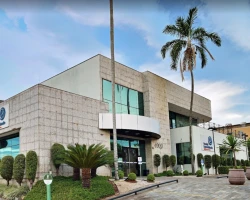
-
Intrathecal pain pump
≈ $1,496
-
Brain aneurysm repair
≈ $5,406
-
Brain aneurysm clipping
≈ $5,595
-
Microvascular decompression (MVD)
≈ $3,676
-
Arteriovenous malformation (AVM) resection
≈ $5,208
-
Brain tumors surgery
≈ $5,263
-
Surgical neurolysis
≈ $957
-
Epidural block
≈ $276
-
Hemicolectomy
≈ $3,255
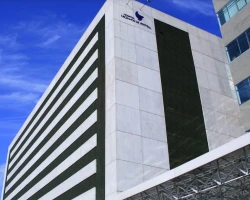
-
Intrathecal pain pump
≈ $1,496
-
Brain aneurysm repair
≈ $5,406
-
Brain aneurysm clipping
≈ $5,595
-
Microvascular decompression (MVD)
≈ $3,676
-
Arteriovenous malformation (AVM) resection
≈ $5,208
-
Brain tumors surgery
≈ $5,263
-
Peripheral nerve repair
≈ $1,868
-
Nerve decompression surgery
≈ $2,088
-
Surgical neurolysis
≈ $957
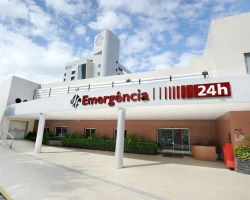
-
Intrathecal pain pump
≈ $1,496
-
Surgical neurolysis
≈ $957
-
Epidural block
≈ $276
-
Hemicolectomy
≈ $3,255
-
Rectum anterior resection
≈ $3,121
-
Radical prostatectomy
≈ $653
-
Transurethral resection of the prostate (TURP)
≈ $2,110
-
Conization
≈ $675
-
Open hysterectomy
≈ $1,981
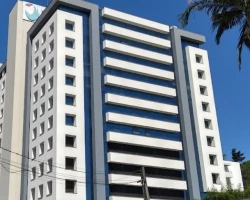
-
Intrathecal pain pump
≈ $1,496
-
Gamma Knife
by request
-
Brain aneurysm repair
≈ $5,406
-
Brain aneurysm clipping
≈ $5,595
-
Microvascular decompression (MVD)
≈ $3,676
-
Arteriovenous malformation (AVM) resection
≈ $5,208
-
Surgical neurolysis
≈ $957
-
Epidural block
≈ $276
-
Hemicolectomy
≈ $3,255
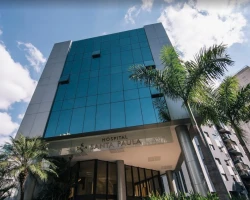
-
Intrathecal pain pump
≈ $1,496
-
Surgical neurolysis
≈ $957
-
Epidural block
≈ $276
-
Hemicolectomy
≈ $3,255
-
Rectum anterior resection
≈ $3,121
-
Radical prostatectomy
≈ $653
-
Transurethral resection of the prostate (TURP)
≈ $2,110
-
Conization
≈ $675
-
Open hysterectomy
≈ $1,981
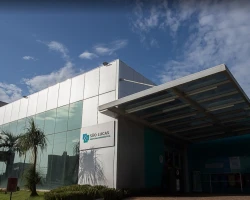
-
Intrathecal pain pump
≈ $1,496
-
Surgical neurolysis
≈ $957
-
Epidural block
≈ $276
-
Hemicolectomy
≈ $3,255
-
Rectum anterior resection
≈ $3,121
-
Radical prostatectomy
≈ $653
-
Transurethral resection of the prostate (TURP)
≈ $2,110
-
Conization
≈ $675
-
Open hysterectomy
≈ $1,981

-
Intrathecal pain pump
≈ $1,496
-
Brain aneurysm repair
≈ $5,406
-
Brain aneurysm clipping
≈ $5,595
-
Microvascular decompression (MVD)
≈ $3,676
-
Arteriovenous malformation (AVM) resection
≈ $5,208
-
Brain tumors surgery
≈ $5,263
-
Peripheral nerve repair
≈ $1,868
-
Nerve decompression surgery
≈ $2,088
-
Surgical neurolysis
≈ $957

-
Intrathecal pain pump
≈ $1,496
-
Brain aneurysm repair
≈ $5,406
-
Brain aneurysm clipping
≈ $5,595
-
Microvascular decompression (MVD)
≈ $3,676
-
Arteriovenous malformation (AVM) resection
≈ $5,208
-
Brain tumors surgery
≈ $5,263
-
Peripheral nerve repair
≈ $1,868
-
Nerve decompression surgery
≈ $2,088
-
Surgical neurolysis
≈ $957

-
Intrathecal pain pump
≈ $1,496
-
Brain aneurysm repair
≈ $5,406
-
Brain aneurysm clipping
≈ $5,595
-
Microvascular decompression (MVD)
≈ $3,676
-
Arteriovenous malformation (AVM) resection
≈ $5,208
-
Brain tumors surgery
≈ $5,263
-
Peripheral nerve repair
≈ $1,868
-
Nerve decompression surgery
≈ $2,088
-
Surgical neurolysis
≈ $957

-
Intrathecal pain pump
≈ $1,496
-
Brain aneurysm repair
≈ $5,406
-
Brain aneurysm clipping
≈ $5,595
-
Microvascular decompression (MVD)
≈ $3,676
-
Arteriovenous malformation (AVM) resection
≈ $5,208
-
Peripheral nerve repair
≈ $1,868
-
Nerve decompression surgery
≈ $2,088
-
Surgical neurolysis
≈ $957
-
Epidural block
≈ $276
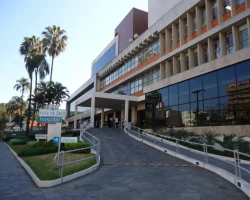
-
Intrathecal pain pump
≈ $1,496
-
Brain tumors surgery
≈ $5,263
-
Peripheral nerve repair
≈ $1,868
-
Nerve decompression surgery
≈ $2,088
-
Surgical neurolysis
≈ $957
-
Epidural block
≈ $276
-
Hemicolectomy
≈ $3,255
-
Rectum anterior resection
≈ $3,121
-
Radical prostatectomy
≈ $653
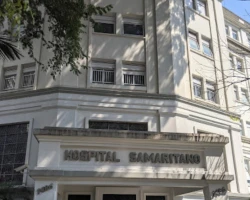
-
Intrathecal pain pump
≈ $1,496
-
Brain aneurysm repair
≈ $5,406
-
Brain aneurysm clipping
≈ $5,595
-
Microvascular decompression (MVD)
≈ $3,676
-
Arteriovenous malformation (AVM) resection
≈ $5,208
-
Surgical neurolysis
≈ $957
-
Epidural block
≈ $276
-
Robot-assisted thyroidectomy
≈ $3,693
-
Robotic-assisted hysterectomy
≈ $5,137

-
Intrathecal pain pump
≈ $1,496
-
Brain aneurysm repair
≈ $5,406
-
Brain aneurysm clipping
≈ $5,595
-
Microvascular decompression (MVD)
≈ $3,676
-
Arteriovenous malformation (AVM) resection
≈ $5,208
-
Brain tumors surgery
≈ $5,263
-
Peripheral nerve repair
≈ $1,868
-
Nerve decompression surgery
≈ $2,088
-
Surgical neurolysis
≈ $957
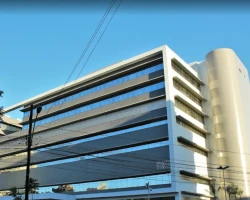
-
Intrathecal pain pump
≈ $1,496
-
Brain aneurysm repair
≈ $5,406
-
Brain aneurysm clipping
≈ $5,595
-
Microvascular decompression (MVD)
≈ $3,676
-
Arteriovenous malformation (AVM) resection
≈ $5,208
-
Surgical neurolysis
≈ $957
-
Epidural block
≈ $276
-
Embolization for cerebral arteriovenous malformation (AVM)
≈ $8,659
-
Brain tumor embolization
≈ $6,742
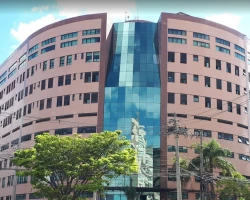
-
Gamma Knife
by request
-
Brain aneurysm repair
≈ $5,406
-
Brain aneurysm clipping
≈ $5,595
-
Microvascular decompression (MVD)
≈ $3,676
-
Arteriovenous malformation (AVM) resection
≈ $5,208
-
Brain tumors surgery
≈ $5,263
-
Peripheral nerve repair
≈ $1,868
-
Nerve decompression surgery
≈ $2,088
-
Hemicolectomy
≈ $3,255

-
Intrathecal pain pump
≈ $1,496
-
Brain aneurysm repair
≈ $5,406
-
Brain aneurysm clipping
≈ $5,595
-
Microvascular decompression (MVD)
≈ $3,676
-
Arteriovenous malformation (AVM) resection
≈ $5,208
-
Brain tumors surgery
≈ $5,263
-
Peripheral nerve repair
≈ $1,868
-
Nerve decompression surgery
≈ $2,088
-
Surgical neurolysis
≈ $957
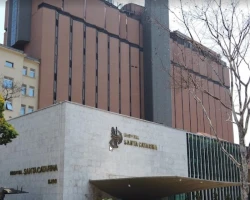
-
Intrathecal pain pump
≈ $1,496
-
Brain aneurysm repair
≈ $5,406
-
Brain aneurysm clipping
≈ $5,595
-
Microvascular decompression (MVD)
≈ $3,676
-
Arteriovenous malformation (AVM) resection
≈ $5,208
-
Brain tumors surgery
≈ $5,263
-
Peripheral nerve repair
≈ $1,868
-
Nerve decompression surgery
≈ $2,088
-
Surgical neurolysis
≈ $957
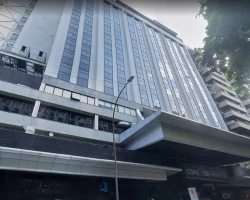
Clinics grouping by rating
Clinic with the highest rating of 4.7 — GRAACC Hospital in São Paulo, Brazil and 1 more, clinic with the most reviews number of 1895 — Santa Catarina Hospital Paulista in São Paulo, Brazil.
With rating 4.0 and over — 7 clinics .
Countries with the highest number of clinics treating the diseases:
Chronic pain:
Related procedures:
Quick navigation
- Brain shunt surgery ≈ $3,410
- Cholecystectomy ≈ $1,470
- Corpus callosotomy ≈ $2,863
- Craniofacial surgery ≈ $3,106
- Distal gastric resection ≈ $2,555
- Duodenectomy ≈ $1,953
- Elevation of depressed skull fracture ≈ $3,371
- Endoscopic septostomy ≈ $2,924
- Endoscopic third ventriculostomy (ETV) ≈ $2,193
- Esophagogastrectomy ≈ $8,090
- Extended cholecystectomy ≈ $3,394
- Extracranial CSF drainage by request
- Focal resection ≈ $2,408
- Functional hemispherectomy ≈ $4,384
- Gastric endoscopic submucosal dissection (ESD) ≈ $682
- Jejunostomy ≈ $1,557
- Laparoscopic cholecystectomy ≈ $1,640
- Laproscopic total gastrectomy ≈ $3,452
- Laser interstitial thermal therapy (LITT) ≈ $4,909
- Lumbar puncture ≈ $242
- Bell's palsy
- Benign bone tumor
- Bone cancer
- Brain metastases
- Cavernous angioma
- Cavernous hemangioma
- Cerebral cavernous malformation (CCM)
- Cerebrovascular occlusive disease
- Chronic pain
- Craniofacial injury
- Craniopharyngioma
- Eye cancer
- Eye melanoma
- Glossopharyngeal neuralgia
- Head and neck cancer
- Hemifacial spasm
- Hip osteoarthritis
- Intracranial atherosclerotic stenosis (ICAS)
- Intraventricular tumor
- Jaw tumor
